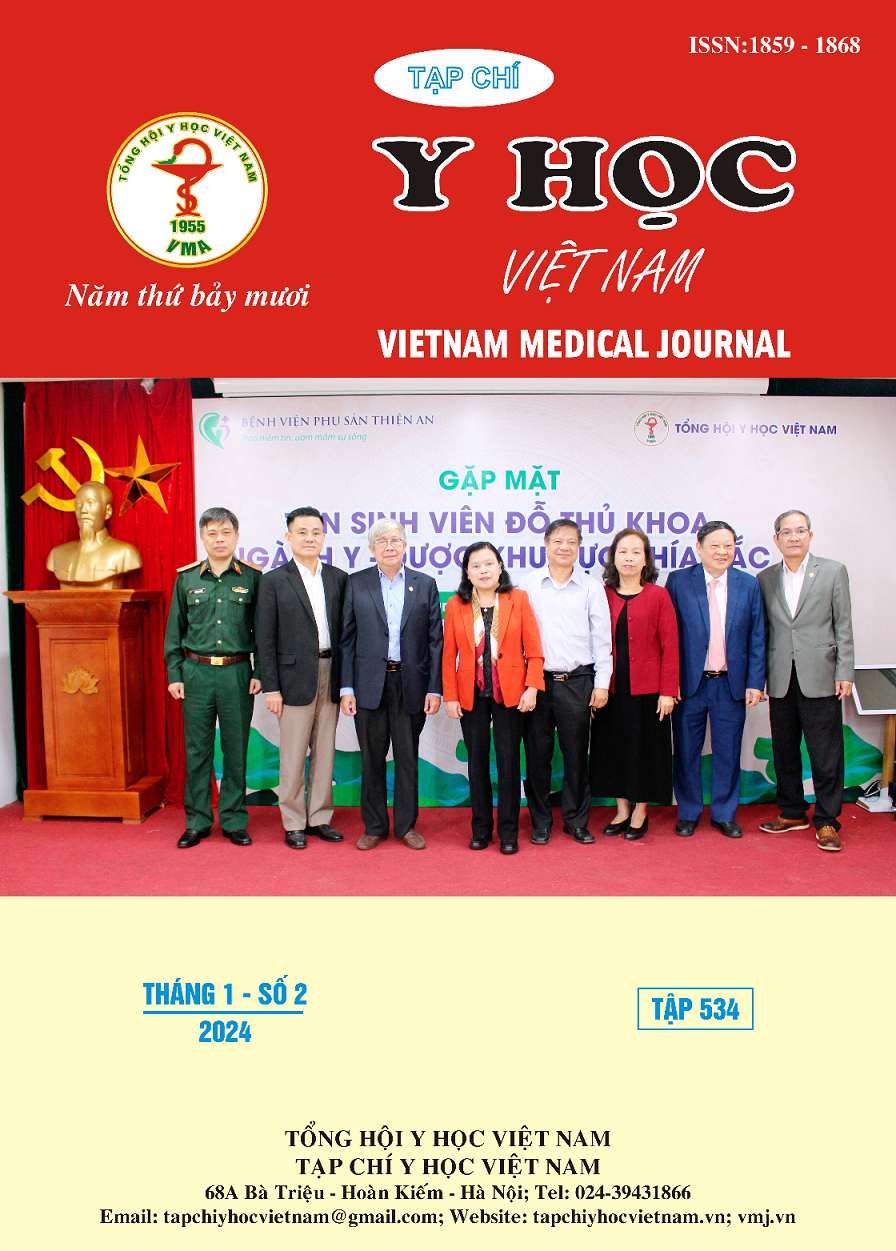SLEEP QUALITY IN HOSPITAL AND SOME RELATED FACTORS OF RESPIRATORY DISEASE PATIENTS AT TAM ANH GENERAL HOSPITAL HANOI IN 2023
Main Article Content
Abstract
The study was conducted on 210 inpatient respiratory patients at Tam Anh Hospital from March 2023 to August 2023 with 2 objectives: (1) Describe the sleep status of respiratory patients at Tam Anh General Hospital Ha Noi in 2023. (2) Analysis of some related factors. Research method: By cross-sectional descriptive research design with analysis, using a scale (RCSQ) to evaluate sleep quality, (BCSS) evaluates clinical symptoms, (HADS-A) evaluates anxiety, (VAS) evaluates pain level. Results: Respiratory patients with poor sleep quality in the hospital according to the RCSQ scale ≤ 5 account for 28.1%. Clinical symptoms of difficulty breathing and pain were statistically significantly related (p<0.05) to sleep quality. Men were more likely to perceive sleep quality in the hospital as worse than at home (41.6% vs. 39.1%). The treatment effectiveness of patients with symptom relief after 2 days was higher in women than in men (90.2% vs. 89.6%). The group ≤ 35 years old had higher sleep quality than the group ≥ 60 years old (85.7% vs. 57.8%) p < 0.001. Patients with good sleep quality at home had better sleep quality in the hospital (87.3% vs. 62.6%; 12.7% vs. 37.4%) OR = 4.12; The 95% CI ranged from 1.9 to 8.7 (p<0.001). The hospital environment does not greatly affect the patient's sleep. Conclusion: People with respiratory diseases have poor sleep quality in the hospital by 28.1%. Clinical symptoms of difficulty breathing and pain are statistically significantly related (p<0.05) to sleep quality. The treatment effect of patients with symptom relief after 2 days is higher in women than in men. The hospital environment does not greatly affect the patient's sleep.
Article Details
References
2. Dương Thị Tố Anh (2022), Đánh giá kết quả chăm sóc bệnh nhân sau mổ cắt ruột thừa nội soi tại Khoa Ngoại-Bệnh viện A Thái Nguyên, Tạp chí Y dược lâm sàng 108, Hội nghị Khoa học Điều dưỡng bệnh viện năm 2022, tr 50-57.
3. Siti Nadiah Binte Arman et al (2022), Subjective sleep quality among hospitalised adult patients: An observational, cross-sectional study, Proceedings of Singapore Healthcare, journals. sagepub.com/home/psh, (31) tr 1- 7.
4. Hà Văn Châu (2020), Đánh giá chất lượng giấc ngủ của người bệnh phổi tắc nghẽn mạn tính, Luận văn thạc sĩ, Đại học Y Dược Thành Phố Hồ Chí Minh.
5. Vũ Ngọc Linh và cộng sự (2023), Đánh giá chất lượng giấc ngủ bằng thang điểm PSQI ở bệnh nhân suy tim mạn tính, Tạp chí Y học Việt Nam, 522(1), tr 221-225.
6. Tiền Ngọc Minh Châu và cộng sự (2020), Tình hình rối loạn giấc ngủ và các yếu tố liên quan đến bệnh nhân nằm viện tại Bệnh viện Đa khoa Trung ương Cần Thơ năm 2019-2020, Tạp chí Y Dược học Cần Thơ, (30), tr. 23-29.
7. Phùng Văn Lợi (2014), Các yếu tố ảnh hưởng tới chất lượng giấc ngủ của người bệnh sau phẫu thuật ổ bụng tại bệnh viện Đa khoa Trung ương Thái Nguyên, Tạp chí Y học Thực Hành, tr. 941 (11), tr. 54.


